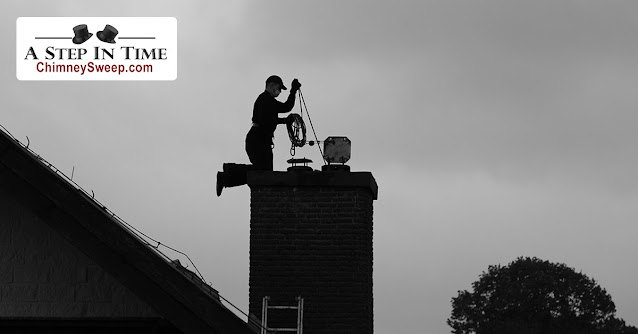Which Are The Essential Chimney Sweeping Tools?
Chimney sweeping is an essential part of maintaining the safety and efficiency of a home’s heating system. It involves removing soot and debris from the interior of the chimney, which can accumulate over time and become a fire hazard. To do this job properly, you’ll need the right tools. In this blog, we’ll take a look at some of the essential chimney sweep tools which all professionals use.
What are the essential tools for chimney sweeping?
The
essential tools for chimney sweeping include a chimney brush, rods, a vacuum
cleaner, a drop cloth, a chimney inspection camera, and personal protective
equipment (PPE) such as gloves and a respirator mask.
Chimney sweeping tools :
Chimney brush
A chimney
brush is perhaps the most important tool in a chimney sweep’s toolkit. It’s a
long, flexible brush designed to fit the shape of the chimney, and it’s used to
scrub the interior walls to remove soot and creosote buildup. The size and
shape of the brush you’ll need will depend on the size and shape of your
chimney.
Chimney rods
Chimney rods are used to extend the reach of the chimney brush. They’re typically made of fibreglass or metal and are screwed together to create a long, flexible rod that can be pushed up the chimney to reach high or difficult-to-reach areas.
Ash vacuum
An ash vacuum is used to clean up any debris or soot that falls to the bottom of the chimney. It’s important to use a specialized vacuum designed for this purpose, as regular household vacuums can’t handle the fine particles of ash and soot that are produced during the sweeping process.
Drop cloths
Chimney sweeping can be a messy job, so it’s important to protect the surrounding area from soot and debris. Drop cloths can be placed on the floor around the fireplace or stove to catch any falling debris.
Chimney inspection camera
A chimney inspection camera is a small, handheld camera that can be inserted into the chimney to inspect the interior walls for any damage or blockages. This tool can help identify potential problems before they become major issues.
Safety equipment
Safety
should always be a top priority when working on a chimney. Essential safety
equipment includes gloves, safety glasses, and a dust mask to protect against
soot and debris. It’s also important to have a sturdy ladder and to use a
safety harness when working on the roof.
Why are chimney sweep tools needed?
Chimney
sweeping tools are mainly needed to remove creosote. Creosote is a flammable
substance that is created when wood or other organic materials are burned. It’s
a black or brown, tar-like substance that can accumulate on the walls of your
chimney. Creosote is a byproduct of incomplete combustion, and it can be
dangerous because it can ignite and cause a chimney fire
Why is Creosote Dangerous?
Creosote is dangerous because it can ignite and cause a chimney fire. The risk of a chimney fire increases as the amount of creosote buildup in the chimney increases. The high temperatures generated by the fire can cause the creosote to ignite, which can create a dangerous and potentially deadly situation. In addition, creosote buildup can also block the chimney, which can cause carbon monoxide to build up in your home, leading to carbon monoxide poisoning.
How Can You Prevent Creosote Buildup?
The best
way to prevent creosote buildup in your chimney is to have it professionally
cleaned and inspected regularly. A professional chimney sweep will use
specialized tools to remove the creosote from the walls of your chimney,
reducing the risk of a chimney fire. In addition, it’s important to use only
well-seasoned wood in your fireplace or wood-burning stove. Wet or unseasoned
wood can create more creosote buildup because it doesn’t burn as cleanly as dry
wood.
Some home remedies which should be avoided :
Can I use household cleaning products to clean my chimney?
No, you should never use household cleaning products, such as bleach, ammonia, or other chemicals, to clean your chimney. These products can be dangerous and can cause serious health hazards, such as toxic fumes and chemical reactions. Chemicals can also corrode the chimney lining, which can lead to further damage.
Can I burn salt to clean my chimney?
No, you should never burn salt to clean your chimney. Burning salt can create a highly corrosive substance that can damage the lining of the chimney and cause it to deteriorate over time. In addition, burning salt can create dangerous fumes that can be harmful to breathe.
Can I use a leaf blower to blow air up the chimney to remove debris?
No, you should never use a leaf blower to clean your chimney. This method can make the problem worse by blowing debris and soot back into the house or onto the roof. It can also damage the chimney lining and create a fire hazard.
Can I ignite a fire in the chimney to burn off any buildup?
No, you should never ignite a fire in the chimney to clean it. This is a highly dangerous method that can cause a chimney fire. Fires can also ignite any buildup that has accumulated, which can lead to a dangerous and potentially deadly situation.
Can I
clean my chimney myself without any professional help?
While it’s possible to clean your chimney yourself, it’s not recommended. Professional chimney sweeps have the proper tools and experience to safely and effectively clean your chimney. By hiring a professional, you can ensure that your home is safe, efficient, and comfortable for years to come.
Conclusion
A Step in Time Chimney Sweeps always uses the right tools that are required for your chimney to function properly. You should take the help of our professionals and get your chimney up to date.

.jpg)
.jpg)
.jpg)
Comments
Post a Comment